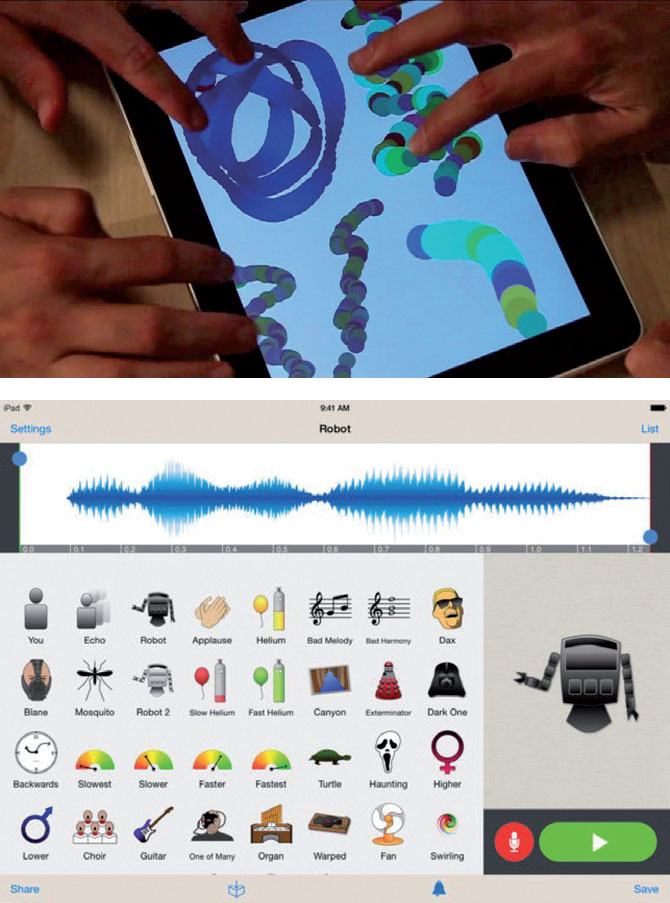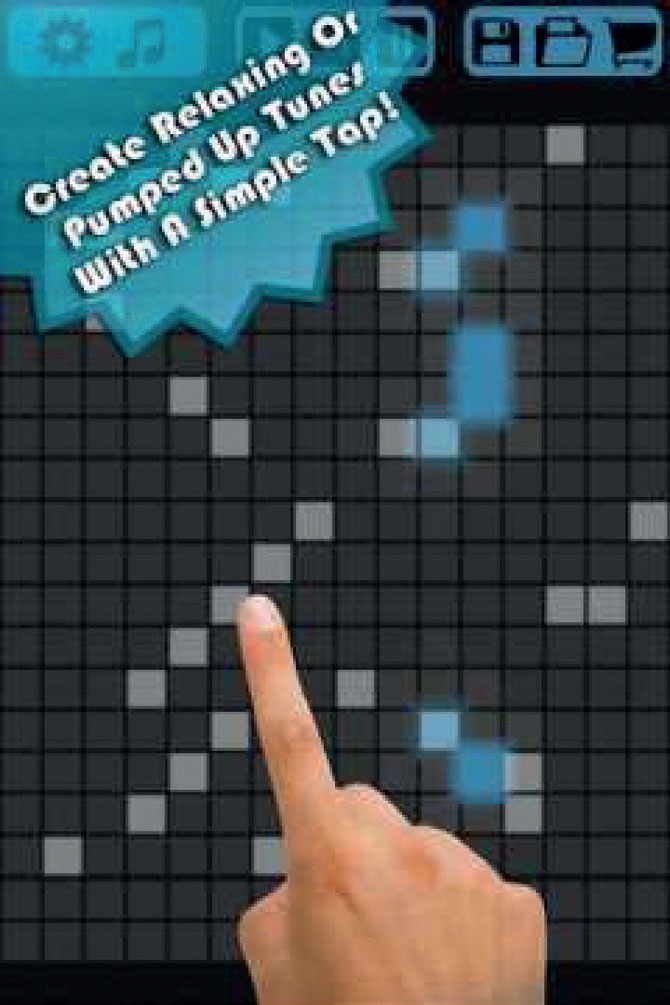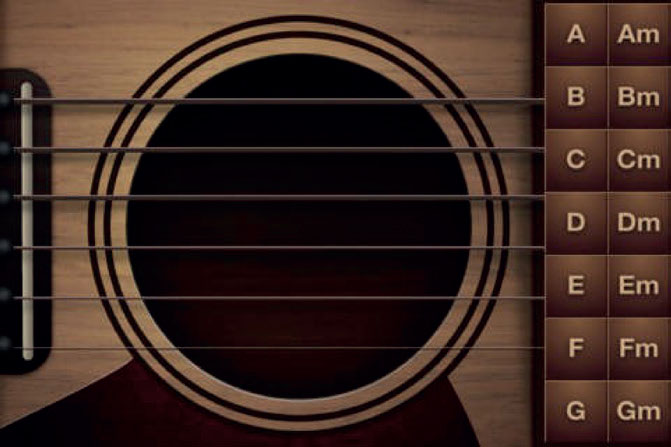
Music therapy is an allied health profession that provides support to people of all ages in a wide range of settings. These include mainstream schools and schools with provision for children and young people with special educational needs and disability (SEND for short). Music therapists incorporate music-based activities, tasks, and exercises to support with functional, non-musical goals. They can play a vital role alongside other professionals in the wellbeing, development, and learning of children and young people by supporting their social interaction and communication, emotion and behaviour, cognition and physical skills.
For the team at Chiltern Music Therapy, technology is invaluable for enabling new opportunities for clients. Pioneering innovation in clinical practice is integral to Chiltern, so we are committed to integrating a range of technology that can support the children and young people we work with. We regularly host music technology training days where we workshop and introduce the latest music technology developments and share our expertise and knowledge with others. Chiltern has recently formed partnerships with mobile and computer software developers, working collaboratively to learn new ways to improve accessibility and promote greater inclusion and creativity for all. What follows is an overview of some of our most regularly used technology and a case study of tech in action.
Types of technology
iPad
Our therapists regularly use specialist iPad apps such as GarageBand and Launchpad to facilitate songwriting for self-expression, and to develop cognitive skills such as choice-making, organisation, and planning. As well as being a powerful creative tool, the iPad can be tailored with a flexible array of apps to help to meet more specific needs. For clients who have very limited movement, the iPad can enable them to participate in playing a virtual instrument for the first time. When used appropriately to support communication needs, specific apps can also prove highly motivating for encouraging vocal responses for our non-verbal clients. As my colleague Toby Hounsham says: ‘Music technology has enabled children to engage in shared music-making and I have seen children energised and excited when they hear sounds and music they have created. Alongside the accompanying live music that I play, a child can improvise and engage in an enriching shared musical experience that otherwise would not have been possible.’
The guided access function on iPad also allows for complete exploration of the application without interference from other programs. Recommendations can then be made to continue exploring at home or in the classroom. iPad technology can therefore help to assist in speech and communication, emotional expression, cognition and learning tasks, as well as in physical rehabilitation and support.

Switches
There is an enormous range of switches available that can be used to support a child to access and create music. Providing a motivating context to engage with this technology can also reinforce the use of switches for goals such as learning how to use the switch for environmental control and functional communication. Some regularly used switches within our team include the touch-sensitive Pal Pad, the grasp switch, and the microlight switch. These can be plugged into other switches such as the BIGmack and Sound Shuffle, into which audio can then be recorded. Our therapists often work with switches in sessions to support children to participate in activities such as phrase-completion by recording in a sung word from a familiar song, or recording in a child's chosen instrument and then facilitating turn-taking in a group. Switches are therefore able to be used to support a whole host of functional goals in the domains of social interaction and communication, cognition, and motor skills.


TunePad and Epic Guitar: Apps that target fine motor skills, dexterity and finger isolations
Instruments
Adaptive instruments are in constant development but the interactive Beamz, Skoog (see page 16), and Makey Makey are excellent examples of equipment that can be used to target a range of physical and cognitive goals whilst simultaneously supporting motivation, engagement, and accessible self-expression. Therapists have used strategic positioning of the Beamz to enable musical engagement using toe movement and supported school learning by creating a tactile piano made of different sensory objects.
Case study

BIGmack, Sound Shuffle and a grasp switch
Katie is a nine-year-old girl who suffered a traumatic brain injury following a road traffic accident. She was left with significant motor impairments with only limited movement in her right elbow and foot. She was no longer able to communicate verbally, though cognitive skills like comprehension, attention and choice-making remained strong. Katie developed a consistent ‘yes’ and ‘no’ response using her eyes, which was used alongside a personalised communication book to support her day to day. She was referred to music therapy to support self-expression, interaction, and to motivate and develop her use of the remaining movement in her right limbs. In her occupational therapy sessions, Katie had begun working on using her right elbow to activate a Smoothie Switch attached to her electric wheelchair – this allowed her the opportunity to drive her chair forward independently. However, performing this movement was incredibly demanding. In music therapy, Katie was able to use yes/no responses with her eyes to choose a familiar song to work on during her session. The music therapist then used her voice to record consecutive sections of the song into a sound shuffle switch. This was then linked to Katie's Smoothie Switch for her to activate using her right elbow. The music therapist then instructed Katie to lead the activity by activating the Smoothie Switch, waiting and listening for each recording to finish, and then activating again to ensure a continuous stream of music. The therapist provided motivation, and support with anticipation and timings by accompanying live at the keyboard. This one activity simultaneously targeted motor skills, switch practice, listening and responding, anticipation, shared interaction, non-verbal communication and self-expression. Katie was so motivated in this activity that she was able to meet her occupational therapy goals more quickly, and over time developed sufficient motor control to then explore using more complex switches and augmentative and alternative communication (AACs) to support her functional communication.

Beamz and Makey Makey
Tech it away
The opportunity to access, create, and enjoy high-quality musical experiences is not always possible for children whose physical limitations mean music-making on live instruments is not possible. Technology gives us new ways to bring children into music and, as seen above, we always seek to identify how particular tech resources can best be used to help address and support individual goals and targets. As technology advances, it continues be the key to opening an alternative door to creativity.
Chiltern Music Therapy maintains an ethos of work which is collaborative, client-centred and evidence-based. Music therapists from the organisation work in schools throughout England, as well as in a wide range of settings such as hospitals, care homes, community centres, hospices and individuals’ homes. For more information on the work that we do please go to chilternmusictherapy.co.uk.
If you would like any information on our next technology training day on 6 July, please email info@chilternmusictherapy.co.uk.








